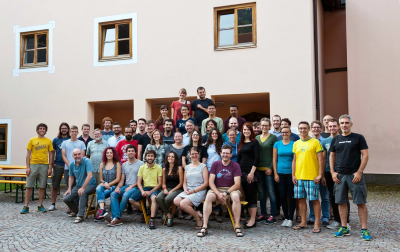- Graduate School GLOMAR
- PhD student reports
- Other activities
- Elmar Albers
Elmar Albers
Report of GLOMAR PhD Elmar Albers about his participation in the EGU Summer School at Bruneck, South Tyrol, Italy, from 25 to 31 August 2017.
The 4th EGU Summer School on ‘Structural analysis of crystalline rocks’ took place in Bruneck, South Tyrol, Italy, from 25 to 31 August 2017. It was designed to teach in depth knowledge and state-of-the-art techniques to study deformation of crystalline rocks, targeting PhD students and early career scientists. The summer school was divided into two parts, a two-day field trip and a four-day lecture part.
The field trip in the Neves area in South Tyrol addressed the analysis of deformation structures within the Tauern metagranitoids. Progressive development of shear zones that exploit a network of joints and pre-existing magmatic or fluid induced compositional heterogeneities could be studied in this area. Unfortunately, however, I could not attend the field trip as my baggage, containing my field gear, was lost on the way to Italy and only arrived in Bruneck when the field trip was almost over.
What was seen in the field was reviewed in the following lecture series. This was in many cases based on detailed studies of the lecturers, all of whom have worked in the Neves area since many years. I was particularly interested in lectures on ‘Fluid–rock interactions in faults and shear zones’ and ‘Role of chemical processes on strain localisation’.
During the lecture part, I could substantially broaden my knowledge on rock deformation and processes of rock failure and faulting. Yet, many lectures did go very much into detail so that in my opinion, the course is well suited for students who are directly involved in the field of structural geology; for me, who only touches this field, a number of lectures were too specialised.
Presenting my own research, however, and discussing this with the experienced lecturers and other students was very fruitful. By this, I was able to improve my understanding of the structural characteristics of my samples. It helped me to interpret the deformation seen in my samples and how fluid–rock interactions and metaomatism may have influence the rock’s rheological properties, which may eventually have lead to the initiation of faults.
All in all, the EGU Summer School improved my knowledge on crystalline rock deformation and I could gain new insights into my own samples. Yet, in my opinion the course may be better suited for full-time structural geologists, who can probably profit even more from very profound lectures and seminars. I’d like to thank GLOMAR for the financial support which allowed me to take part in the summer school.



